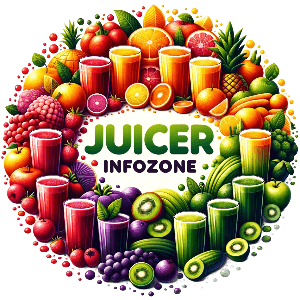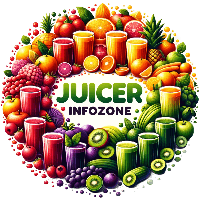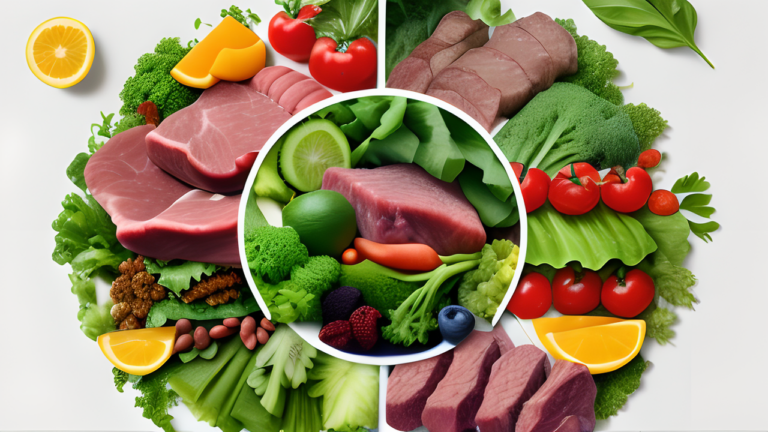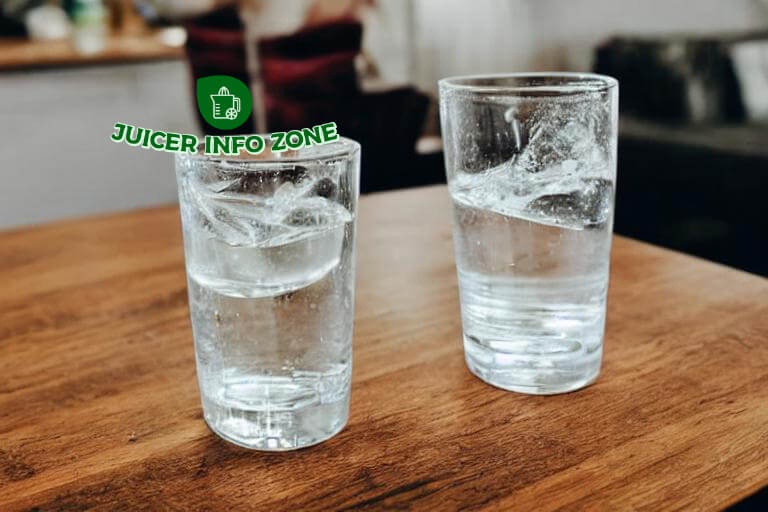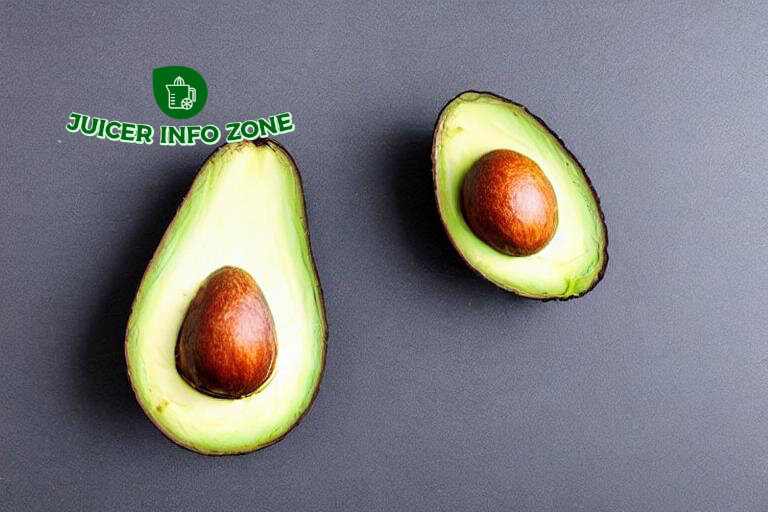Is Instant Oatmeal Good For You?
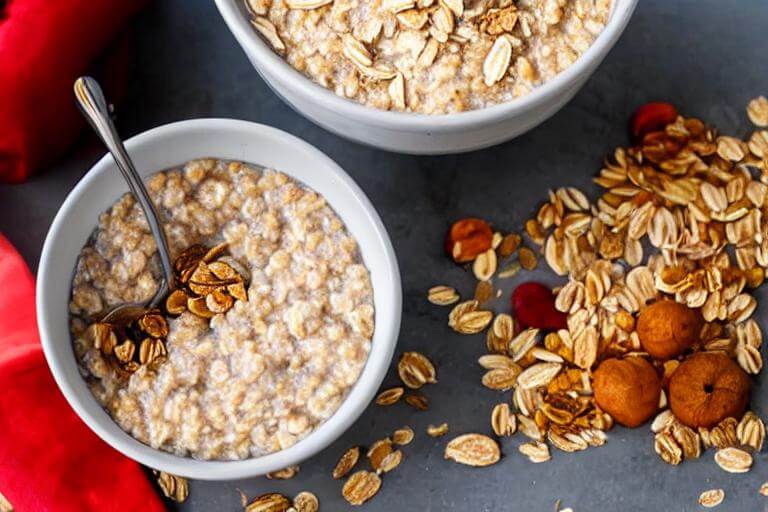
Given the choice between eating no oatmeal, and eating instant oatmeal, I would say the instant oats are still a good breakfast choice (with some caveats.) Maybe not ideal, but eating healthy is a matter of degrees.
The reason oatmeal consistently makes my top 10 list of clean eating foods is two fold:
- It’s high in both soluble and insoluble fiber. The soluble fiber is really the key, because the beta-glucans in oatmeal have been shown to help reduce bad cholesterol by literally binding to them and sweeping them out of the body
- It’s a great source of slow-digesting, complex carbohydrates. The more “whole” the grain, the slower the digestion. This helps keep blood sugar levels stable, prevents energy crashes as the gym or office and discourages you from feeling hungry later in the morning or day.
I mention these two benefits because when you compare instant oatmeal to things like slower-cooking rolled oats because the way the oat is processed does have some impact on how the body digests them. This can effect the second benefit — slower digestion — but generally doesn’t negatively impact the first, cholesterol-lowering benefit.
But before we get into that, let’s understand exactly what instant oatmeal is and compare its nutritional values versus old fashioned oatmeal (rolled oats.)
What Is Instant Oatmeal?
 CLICK HERE TO VIEW CURRENT PRICING
CLICK HERE TO VIEW CURRENT PRICING
Instant oatmeal is simply thinly rolled oats which are then cut into very small pieces and pre-cooked by steaming.
The oatmeal is then typically “enhanced” with natural or unnatural flavorings, salt, sugar, and in some cases, preservatives. It’s then stuck in little 1 oz serving packets for convenience. This is the Maple and Brown sugar stuff you find in the box in the cereal isle.
Most instant oatmeal also comes in a “regular” flavor, which doesn’t have all the sugar and preservatives added, although it will often contain some added salt. For the sake of your question, we’re going to look at the regular, unsweetened variety. If we compared the flavored stuff, the old fashioned oats would win hands down.
The advantage of instant oatmeal over other forms of oatmeal like old fashioned oatmeal or oat groats, is cooking time. Thick cut or old fashioned rolled oats will typically take about ten minutes to cook on the stove top (less in the microwave); quick oats take about two minutes, and instant oats … well, you just add hot water and you’re all set.
Some people obviously also enjoy the added sugar and flavor in things like Raisin and Brown Sugar instant oatmeal, but the flavored varieties are where you start running into the nutritional problems — especially around sugar and sodium — so stay away from them.
What Is The Nutritional Value of Instant Oatmeal?
Surprisingly, if you go with the natural, unsweetened and unflavored variety of instant oatmeal, the basic nutritional values of instant oats are not all that different from slower cooking old fashioned oatmeal.
Here’s what a 1 oz packet of Quaker Instant Oatmeal (regular flavor with no added sugar) looks like:
Calories: 100 Fat: 2.0 grams Saturated Fat: 0 Cholesterol: 0 Protein: 4 grams Sodium: 80 mg Carbohydrates: 19 grams Fiber: 3 grams Sugar: 0 grams Calcium: 100 mg
Now, let’s look at a 1 oz dry serving of Quaker Old Fashioned Oatmeal (the stuff that takes 10 minutes to cook):
Calories: 106 Fat: 2.1 Saturated Fat: 0.4 Cholesterol: 0 mg Protein: 3.5 grams Sodium: 0 mg Carbohydrate: 19.1 grams Fiber: 2.9 grams Sugar: 0.7 grams Calcium: 0 mg
Surprise! Aside from the higher sodium content, the regular Quaker Instant Oatmeal actually has a marginally better macro-nutrient profile.
Why is that?
Well, the Quaker Oatmeal has the addition of oat flour added to the packets, which increases the fiber and protein content slightly. The higher calcium content is due to the addition of calcium carbonate to the mixture. Quaker also fortifies the instant oatmeal with a number of vitamins as well.
Now, you can get into philosophical and nutritional debates around whether these added vitamins and ingredients are good or bad, but from a basic nutrition perspective, instant oatmeal has gotten an undeserved, bad rap. It’s actually just as nutritious as old fashioned rolled oats.
But Instant Oatmeal Is Pre-Cooked! Isn’t That Bad?
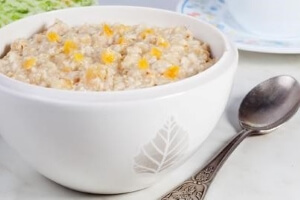
Food purists often criticize instant oatmeal because it’s “pre-cooked.” The argument is that this pre-cooking reduces the natural nutritional values of the oat compared to thick cut rolled oats or oat groats.
But here’s a little secret:
Unless you are eating raw oat groats straight from the field, almost all oat products, including steel cut oats, thick rolled oats and Old Fashioned oatmeal are “pre-cooked” to some degree through the standard steaming process that’s done during milling. If they didn’t do this, it could literally take an hour to fully cook the raw oat.
Even raw oat bran is only marginally more nutrition ounce-for-ounce when you look strictly at the macros.
Now, could there be benefits to eating a less processed or uncooked form of oats, especially in terms of heat-sensitive vitamins? Perhaps. But when you compare instant oatmeal to old fashioned oats using the standard macros, they are pretty much equal.
Instant Oatmeal vs. Old Fashioned Oatmeal: Glycemic Load
The main difference between instant oatmeal versus old fashioned oatmeal is in regard to how rapidly the carbohydrates in instant oatmeal are digested and impact blood sugar levels.
In general, more finely chopped a food is, the more quickly it’s digested. Cooking also makes carbohydrates more easily digested.
The conventional wisdom around instant oatmeal versus old fashioned oatmeal is that instant oats spike blood sugar levels more dramatically than slower cooking rolled oatmeal varieties.
One of the ways this is measured is by looking at the glycemic load of a food, which measures how a particular food impacts blood sugar and insulin. The higher the glycemic load (GL) number, the more impact a food has on insulin release.
Unsweetened, instant oatmeal has a glycemic load of 17 versus 13 for regular oats. The scale goes from 1-50 — with pure glucose having a glycemic load of 50. To provide some perspective, brown rice — that staple of clean eating — has a GL of 18 and whole sweet potatoes (another bodybuilding favorite) have a GL of 17: In other words, on par with instant oatmeal.
So even here, while the instant variety of oatmeal does have more impact on blood sugar levels, it’s not nearly as dramatic as people often think — especially compared to other whole food sources of complex carbs that are consumed every day as part of a healthy diet.
It’s also important to remember the GL can be effected by the other foods you eat with the oatmeal, so if you are adding things like almonds, whey protein or whole fruit, the GL will typically decrease.
So Is Instant Oatmeal Good For You? The Verdict
Provided you are just talking about plain, regular instant oatmeal without the added sugar of things like Maple & Brown Sugar Instant Oatmeal or Cinnamon & Spice Instant Oatmeal, instant oatmeal is still a solid breakfast.
You’ll still get the cholesterol-lower benefits of the soluble oat fiber — and while instant oatmeal does have a slightly higher glycemic load — it’s not nearly as bad as people think. So if the convenience of instant oatmeal helps you eat more of this healthy food, then go ahead and eat it.
In terms of sodium, even here, instant oatmeal isn’t terrible. There are other sources of food you probably eat daily with much more salt. So I wouldn’t over-focus on this unless you are on a sodium-controlled diet.
The Main Difference: Flavor and Texture

At the end of the day, the biggest difference between instant oatmeal and things like thick rolled oats or Scottish oats is the texture, flavor and how satisfying and filling they are.
Instant oatmeal is very mushy and its flavor can’t really compare to something like thick rolled oats. But many people like instant oatmeal just fine.
Also, oatmeal that takes longer to cook tends to absorb more water, and increases in volume much more than instant oats. Eating old fashioned or thick rolled oatmeal can help you feel fuller, for longer and makes the non-instant variety of oats more satisfying for many people. So that definitely can be an advantage.
If you want to have the convenience of instant oatmeal but with some of the flavor and texture benefits of a slower-cooking oatmeal, you can always prepare a large batch of oatmeal the night before and simply warm it up in a microwave the next morning. You will probably have to add some water or skim milk to it to make it creamier, but this is one way to get the time saving benefits of instant and the flavor benefits of slow-cooked oats.
Oatmeal prepared ahead of time can be stored in the refrigerator in a covered container for up to four days.
